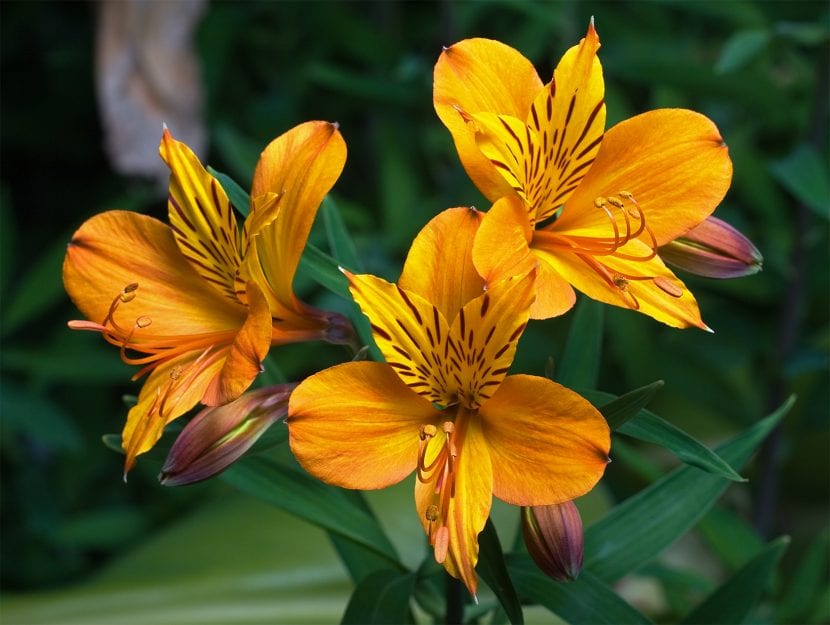
Alstroemeria aurantiaca
The plants known as alstromelia They are magnificent: they produce brightly colored flowers, ideal for decorating any corner of the garden, patio or even the balcony. As there are also many varieties and they are very inexpensive, it is very easy to have a beautiful collection.
If you want to know them more in depth, then I will tell you all its secrets.
Origin and characteristics
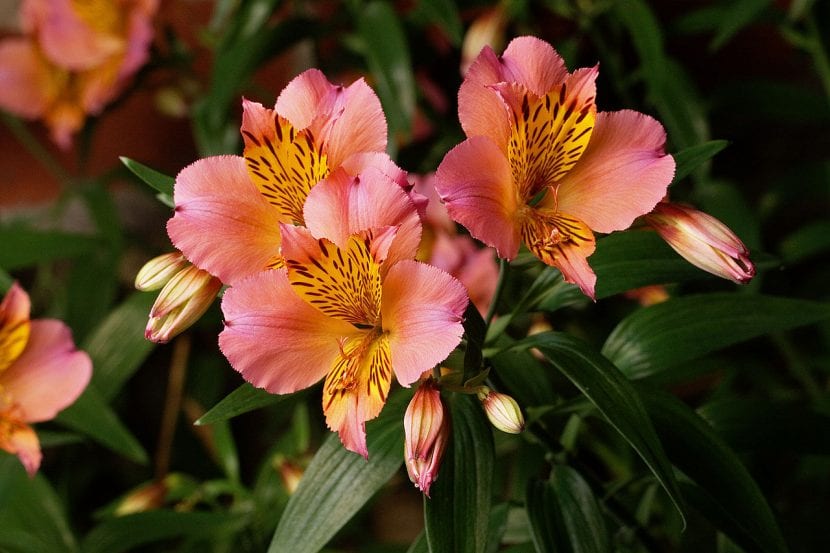
Alstroemeria aurea 'Saturne'
Our protagonists They are perennial tuberous or rhizomatous plants native to the cool and mountainous regions of South America, especially from the Andes. They belong to the genus Alstroemeria, but are better known by the name of alstromelia, field lily, lily of Peru or lily of the Incas. There are about 120 species, some of which you can see in this article.
It develops stems that they reach between 20 and 70cm in height. These are glabrous in the upper segments and scaly at the base. In its upper third we find the leaves, which are dark green. The flowers are large, between 4 and 6cm, in colors that range from yellow to lilac, through red, pink, pastel, and even bi or tricolor. It blooms in summer-autumn.
It is a toxic plant if ingested.
What are their cares?
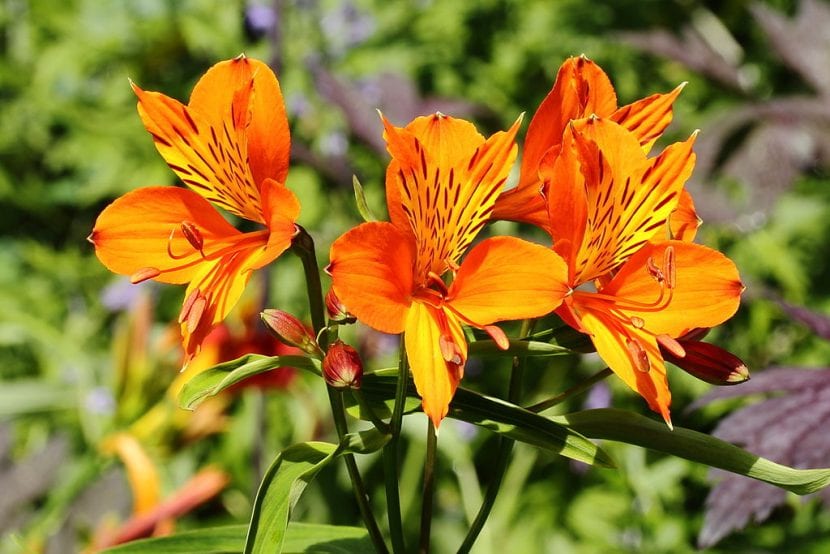
Alstroemeria aurea 'Orange King'
If you want to have a copy, we recommend that you provide the following care:
Location
You can place your alstromelia both in full sun as in half shade, but it is important that you have it abroad. It is not adapted to living indoors.
Earth
The soil will vary depending on where it is planted:
- Flower pot: universal growing medium (you can buy it here) mixed with 30% perlite (like this one from here).
- Garden: it is very necessary that you have good drainage. It does not tolerate waterlogging.
Irrigation
Irrigation it has to be moderate in summer and rather scarce the rest of the year. It is necessary to water an average of 2-3 times a week during the hottest season, and every 10 days the rest.
Subscriber
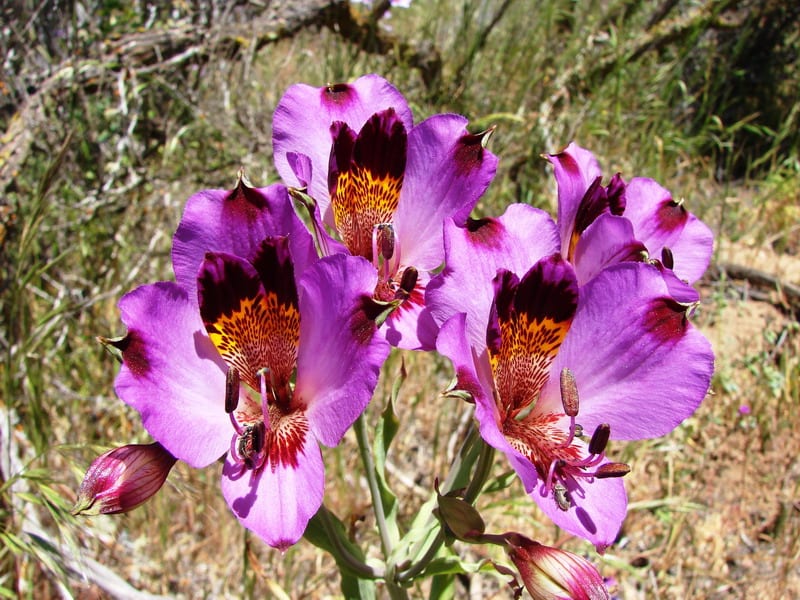
alstroemeria magnifica
Subscribing is highly recommended to have a strong and healthy plant. But which one to use?
- Flower pot: liquid fertilizers must be used. From experience I usually recommend guano a lot, since it is rich in nutrients and its effectiveness is fast, but you can use others without problem, such as those that are rich in phosphorus and potassium. Of course, you must follow the instructions specified on the package.
- Garden: If it is planted in the garden, in order not to damage the soil or the life in it, it should be fertilized with organic fertilizers, such as chicken manure for example (if you can get it fresh, let it dry for at least ten days in the sun before use). Scoop a handful around the plant and mix it a little with the soil, like this once a month.
Planting or transplanting time
Alstromelia it is planted in spring or fall, depending on whether frost occurs or not. In the event that they do register, then it is better to wait for them to pass to avoid losing it.
If you have it in a pot, you have to transplant it every two years, more than anything to renew -as much as possible- the substrate. Be careful when handling the roots: you just have to remove the substrate that you can, without damaging them.
Multiplication
It can be multiplied by seeds or by division. Let's see how to proceed in each case:
Seeds
If you want to multiply it by seeds, you should follow this step by step in autumn or, better, in spring:
- First, you must fill a seedling tray (you can buy it here) with universal growing substrate.
- Second, water well, so that the substrate is soaked.
- Third, place a maximum of two seeds in each socket.
- Fourth, cover them with a thin layer of substrate.
- Fifth, water again, this time with a sprayer.
- Sixth, introduce the seedling into a tray without holes. Every time you water, you will have to refill this tray.
Thus, keeping the substrate always moist, seeds will germinate in 3-4 weeks.
Division
To divide the alstromelia you must do the following:
- First, in the fall, remove the plant from the pot or the ground.
- Afterward, remove as much soil as you can from its roots. Soak them if it's easier for you, and clean them.
- Next, locate the roots that are thicker, and separate them.
- The next step is to plant them in individual pots or in other parts of the garden.
Plagues and diseases
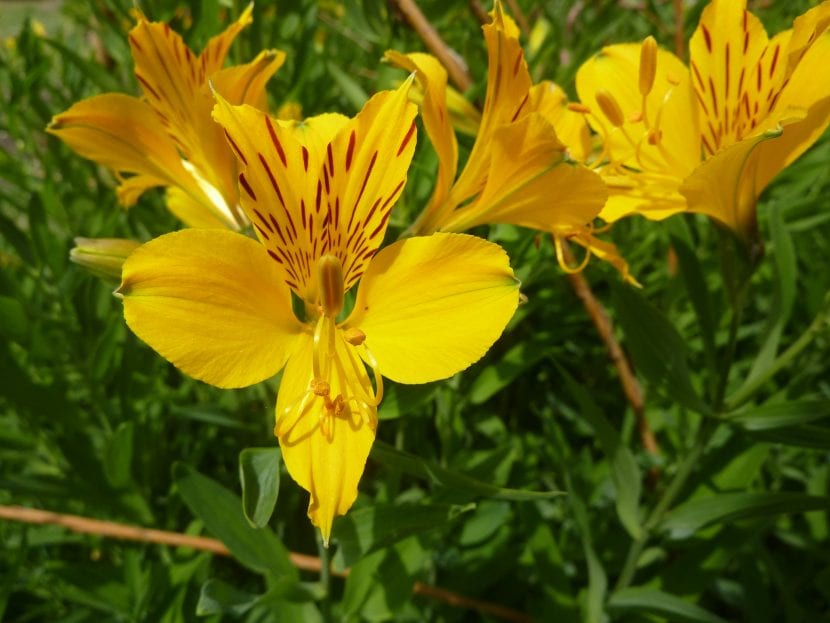
Alstroemeria aurea 'Peruvian Lily'
It's very tough. You may be able to get a cottony mealybug if the environment is hot and dry, but it can be removed with one hand or a brush.
Rusticity
Withstands cold and weak and occasional frosts of up to -2ºC. If you live in an area where winter is cooler, you should put it inside the home so that it can withstand the winter without difficulty.
And with this we are done. What did you think of astromelia? Without a doubt, it is a plant that leaves no one indifferent. Surely with the advice we have given you you will be able to enjoy it a lot.
I bought seeds of this plant.
How should I proceed to plant them in a pot?
Thank you.